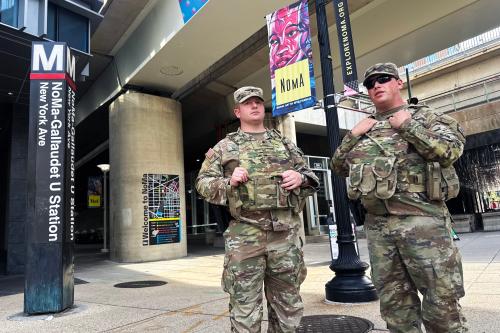In the last several years, when the Commerce-Justice-State appropriations bill moves through the House of Representatives, a ritual of a sort unfolds. A Member expresses concern over the underfunding of federal assistance for state and local law enforcement, speaks against waste at the Census Bureau, and then offers an amendment to move money from the Census Bureau to the Department of Justice. Two years ago, an effort to shift $107 million failed; last year, the House agreed to transfer $20 million from the Census Bureau to fight methamphetamine production and trafficking. One is hearing rumblings of a similar sort—move money from Census to DOJ—this year.
The logic of these moves is appealing. Federal funding for state and local law enforcement is politically popular and often programmatically effective means of reducing crime. The Census Bureau seems like an inviting target. It gets hundreds of millions of dollars a year and it’s difficult to see any connection between public safety and reams of census numbers. So it’s understandable that one amendment sponsor would say: “Do our cops, who are on the front lines of homeland security, not need the money more than the bureaucrats at the Census Bureau?”
However, while the logic seems appealing, reprogramming Census Bureau funds actually is counterproductive to the aims of amendment supporters—because census data are critically important to fighting crime.
Every day, police commanders must make decisions about how to effectively deploy scarce manpower, equipment, and other resources. Crime mapping has emerged as a critical tool in ensuring that these scarce resources are used to the best effect. While New York City’s CrimeStat is the most prominently heralded crime mapping effort, there are thousands of similar efforts in states and communities, large and small, across the U.S. As a Department of Justice publication indicates, “(A)n understanding of where and why crimes occur can improve attempts to fight crime. . . . Mapping crime can help law enforcement protect citizens more effectively in the areas they serve.”
Crime mapping applications at the state and local levels rely heavily on Census Bureau’s demographic and housing data. Crime mapping is most effective when analysts can see the relationship between various types of criminal incidents (e.g., homicides, drug dealing) and neighborhood characteristics (risk factors such as poverty, population density, and vacant housing), pinpoint where crimes are most likely to occur (hot spots), and focus police resources accordingly. For state and local crime mappers, the Census Bureau is the single most important source of population and housing data at the neighborhood level.
Members concerned about methamphetamines will find the work of the Illinois State Police of particular interest. The state police use decennial census data to map potential “hot spots . . . that should be closely monitored for new methamphetamine activity.” Six of the eight risk factors used to identify meth hot spots rely on census figures, including the percent of the population that is white (most meth users are white), between ages 25 and 29, in poverty, single, with less than a high school education (average educational attainment of a meth user is 11 years), and in a rural county. Members also will find of interest that Crime Mapping News, which highlighted the Illinois anti-meth effort, is published by DOJ.
As valuable as decennial census data are for mapping hot spots, they are produced only once a decade, and so become increasingly out of date. In Illinois, for instance, while the use of meth exploded statewide in the late 1990s, the only small area demographic data available was from the 1990 Census. Once the Census 2000 data arrived, this problem was addressed, but now these data also are getting old.
With funding from Congress, the Census Bureau is rectifying the problem of obsolete neighborhood data by implementing the American Community Survey (ACS). The ACS will provide neighborhood-level data every year, rather than once a decade. With current rather than old data in hand, crime-fighting efforts through mapping of hot spots, in Illinois and across the U.S., will be more effective.
And cost-efficient. Neighborhood-level decennial census and ACS data are available to state and local governments free of charge. Moreover, a significant number of police departments download Census TIGER files to generate the maps—the streets, bridges, and so forth—over which crimes and neighborhood characteristics are laid. The Census Bureau has been providing this direct federal assistance to state and local law enforcement for some time. Without the Census Bureau’s freely available resources, state and local police departments would need to divert precious funds and not get nearly as much value in the process.
To maintain the Census Bureau’s assistance to crime-fighting efforts around the nation, it must receive adequate fiscal year 2007 funding to carry out the ACS and plan for the 2010 Census, the foundation for an accurate ACS. Members of Congress who want to take a bite out of the Census Bureau in the name of fighting crime will only hinder the police efforts they so want to help.
The Brookings Institution is committed to quality, independence, and impact.
We are supported by a diverse array of funders. In line with our values and policies, each Brookings publication represents the sole views of its author(s).



Commentary
Op-edTo Take a Bite Out of Crime: Safeguard the Census
June 26, 2006